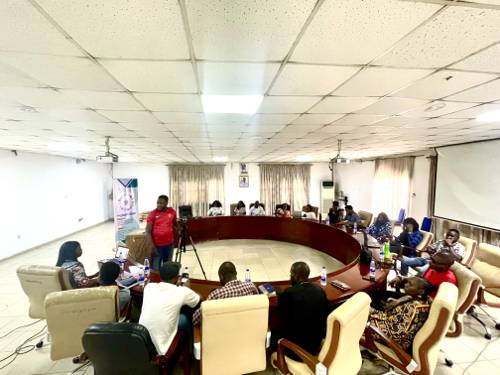
FAQ About The Cultural Impact of Spoken Language Revitalization Movements

What are spoken language revitalization movements?
Spoken language revitalization movements are efforts undertaken by communities, linguists, and cultural organizations to revive and promote languages that are endangered or at risk of falling out of use. These movements aim to strengthen the use of these languages across multiple domains of life, often involving educational programs, community engagement, and policy advocacy to support the language's growth and sustainability.

Why is it important to revitalize endangered languages?
Revitalizing endangered languages is crucial for preserving cultural identity and heritage. Languages are key vehicles of culture, representing unique worldviews, traditions, and histories. When a language dies, the cultural diversity and richness it embodies can also be lost. Moreover, language revitalization contributes to global linguistic diversity, fostering greater understanding and appreciation of different cultures.

How do spoken language revitalization movements support cultural identity?
Spoken language revitalization movements support cultural identity by reaffirming a community's historical and social ties through their native language. Languages hold the knowledge, traditions, and collective memory of a community, and revitalizing them helps strengthen a sense of belonging and pride among speakers. By promoting the use of indigenous or endangered languages, communities can maintain and celebrate their unique cultural narratives and practices.

What are some successful examples of language revitalization?
One successful example is the revitalization of the Maori language in New Zealand, which has experienced significant growth thanks to educational programs like Kōhanga Reo (language nests) and Te Ataarangi. Another example is the revival of Hebrew, which was transformed from a sacred religious language to a spoken national language in modern Israel. Efforts also continue for indigenous languages in countries like Australia, Canada, and the United States, where immersion schools and language classes are helping to breathe life back into endangered languages.

How do language revitalization efforts influence linguistic diversity globally?
Language revitalization efforts enhance global linguistic diversity by maintaining and increasing the number of languages actively spoken within the world. These movements counteract the extensive loss of languages, as approximately one language disappears every two weeks. Through revitalization initiatives, and by preserving indigenous languages, we sustain the diverse pool of linguistic resources worldwide, contributing to richer linguistic and cultural landscapes.

What challenges do language revitalization movements face?
Language revitalization movements face several challenges, including limited resources, lack of institutional support, and declining number of fluent speakers. Additionally, younger generations may prefer dominant languages for economic reasons, leading to less interest in learning ancestral languages. Political and social factors can also hinder revitalization efforts if languages are suppressed or marginalized in broader societal contexts.

In what ways do the arts benefit from language revitalization movements?
The arts benefit significantly from language revitalization movements as these efforts inspire creative expression and preserve cultural heritage. Revitalized languages lead to the creation of literature, music, theater, and visual arts that reflect and celebrate cultural narratives and identities. This enrichment contributes to a vibrant cultural tapestry, allowing artists to explore themes and stories that may have otherwise been lost.

What role do educational programs play in language revitalization?
Educational programs are pivotal in language revitalization efforts. They provide structured environments for language learning and create opportunities for both children and adults to engage with endangered languages. Programs like language immersion schools, cultural workshops, and university courses help cultivate fluent speakers and nurture a community's interest and pride in their native language. These initiatives are crucial for sustaining long-term language vitality.

Can technology aid in spoken language revitalization?
Yes, technology plays a significant role in language revitalization efforts by providing innovative tools and platforms for language learning and documentation. Digital resources such as mobile apps, online courses, and social media help reach wider audiences, making languages more accessible. Additionally, technology facilitates the recording and preservation of linguistic data, creating valuable archives that support both learning and scholarly research.

How can individuals contribute to language revitalization movements?
Individuals can contribute to language revitalization by learning and using endangered languages in daily life, supporting community initiatives, and raising awareness about the importance of linguistic diversity. Participation in language classes, cultural events, and advocacy efforts can make a significant impact. Additionally, those with linguistic skills can volunteer to help document languages or create educational materials.

What is the connection between language revitalization and environmental conservation?
There is a notable connection between language revitalization and environmental conservation, as indigenous languages often contain valuable ecological knowledge passed down through generations. Revitalizing these languages can help preserve traditional practices and insights related to biodiversity and sustainability. Such knowledge can contribute to environmental stewardship and inform conservation efforts globally.

How do governments support language revitalization?
Governments can support language revitalization through policy measures, funding, and institutional support. By recognizing minority languages officially and incorporating them into educational curricula, governments help normalize their use. Funding for cultural projects and language programs also creates opportunities for community-based initiatives, while legal frameworks can protect linguistic rights and promote linguistic diversity at national and regional levels.

What is the impact of globalization on language revitalization?
Globalization poses both challenges and opportunities for language revitalization. While the dominance of global languages like English can threaten linguistic diversity, it also creates opportunities for cross-cultural sharing and advocacy. Revitalization movements can leverage global platforms to raise awareness, build international support networks, and access resources, potentially even sparking interest from global audiences in learning about endangered languages.

Are there any misconceptions about language revitalization?
One common misconception is that language revitalization efforts aim to reject modernity or global languages. In reality, these movements seek to complement and coexist with dominant languages, fostering multilingualism and cultural diversity. Another misconception is that all languages are inherently equal in terms of vitality, ignoring the specific challenges and strategies required for each unique language context.

How does language revitalization affect community economies?
Language revitalization can positively impact community economies by promoting cultural tourism and creating jobs related to language education and cultural initiatives. It can also enhance economic prospects by bilingual individuals in labor markets. By strengthening cultural identity and pride, revitalized languages can foster an entrepreneurial spirit within communities, further contributing to economic resilience and innovation.

What resources are available for communities involved in language revitalization?
Communities involved in language revitalization have access to a wide range of resources, including grants from government and non-profit organizations, educational materials, and training workshops for language teachers. Online platforms and technological tools offer additional means to support language documentation and learning. Collaborative networks of linguists and cultural activists also provide valuable guidance and research to support these efforts.

How does language revitalization relate to social justice?
Language revitalization is closely tied to social justice as it seeks to empower marginalized communities and rectify historical injustices where languages and cultures were suppressed. By supporting language revitalization, these movements advocate for the recognition and respect of linguistic and cultural rights, contributing to a more equitable and inclusive society where diverse identities are valued and protected.

Can language revitalization movements succeed without fluent speakers?
While having fluent speakers greatly aids language revitalization efforts, movements can still succeed through documented resources, technological tools, and educational initiatives. Language learners can become conversationally proficient, gradually developing fluency over time. Communities often emphasize creating supportive environments to encourage language use, even if complete fluency is initially limited.

What impact do language revitalization movements have on youth?
Language revitalization movements can profoundly impact youth by connecting them to their cultural heritage and instilling a sense of pride and identity. By learning and actively using their ancestral languages, young people can access cultural knowledge and contribute to their community's cultural continuity. These experiences can empower youth, broadening their perspectives and enhancing their confidence in their cultural identity.

Why is documentation crucial in language revitalization efforts?
Documentation is crucial in language revitalization efforts because it provides a permanent record of linguistic features, vocabulary, and cultural knowledge associated with a language. This can offer vital resources for teaching and learning, especially if community members or instructors are not fluent speakers. Comprehensive documentation helps ensure that future generations can access and revive the language, even in challenging circumstances.
